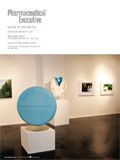Introduction: Nothing New
Sometimes looking back is a way to look forward
ORIGINALLY, we were going to call our supplement The Brave New World of Pharma Branding. Turns out, however, theres nothing remotely new about drugs and branding. They have been inextricably linked from the get-go. Indeed, patent medicines were the first major product of the advertising industry.
In the 19th century, patent medicines were called nostrum remedium, or "our remedy" in Latin. Medical anthropologist Kalman Applbaum, in her wonderfully informative and insightful essay "Pharmaceutical Marketing and the Invention of the Medical Consumer," tells us that patent or trademarked medicines were those whose efficacy was questionable, and their ingredients were usually kept secret. Branders were called nostrum sellers and they literally pioneered print advertising, the use of trademarks, distinctive packaging, "pull" or demand-stimulation strategies, and even the design and commissioning of medical almanacs that functioned as vehicles for the promotion of disease awareness.
All sound familiar? Well, the controversy that surrounded these practices was too. Novelist Henry James called the branders Nostrummongers and claimed they were leading consumers on. His brother, William James, a psychologist, was equally outraged by the medical advertisement abomination and declared that the authors of the ads should be treated as public enemies and have no mercy shown.
BRANDING IN BOSTON
The James brothers came from Boston, and so it's perhaps fitting that the first DTC advertisement did too. Well...maybe the Ether Monument (see photograph) erected to commemorate the first public demonstration of inhalation anesthesia in 1846 was not really an advertisement. Nonetheless, it was the first time a drug was honored and promoted as such. The monument's marble and granite images and inscriptions addressed universal themes—the suffering caused by war, the desire on behalf of loved ones to relieve pain, and the triumph of medical science. And, of course, it was well deserved (think limbs routinely amputated without anesthesia). The monument, sculpted by John Quincy Adams Ward, was hugely expensive—$6,300. Thomas Lee, a private citizen, footed the bill.
And in keeping with anything having to do with drugs and advertising (it seems), immediate controversy ensued. People questioned whom exactly invented ether. Many argued it had been around since the 13th century, and most recently had been used as a recreational drug at the so-called ether frolics (the 19th century version of the rave party). Mark Twain later proclaimed the Ether Monument was made of hardy material, but the lie it tells will outlast it a million years.
BRANDING TRUST TODAY
The question remains then: Can you brand drugs, and how do you do it in such a way as to promote trustworthiness (not contrariness) in the product, the company, and the industry itself? In Pharmaceutical Executive's Guide to Brands, we asked some of the top brandmeisters in the business to weigh in on the issue. Included, too, are articles that take a look at marketing with integrity in a skeptical age; DTC advertising after 10 years; properly branding disease; and branding in the digital age. And we kick it off with an intriguing article ("When Branding Is Art") about a marketing campaign for a disease and a drug that doesn't exist.
A final note: When the founder of Johnson & Johnson, Robert Wood Johnson, began his small family-owned business, he jotted down his philosophy in a pamphlet, a version of which is still used by the company as their credo. He must have hit on something, because a 2006 survey of doctors by the nonprofit Ponemon Institute found J&J to be the most trusted pharma company. The title of Johnson's 1935 pamphlet? Try Reality.
The Misinformation Maze: Navigating Public Health in the Digital Age
March 11th 2025Jennifer Butler, chief commercial officer of Pleio, discusses misinformation's threat to public health, where patients are turning for trustworthy health information, the industry's pivot to peer-to-patient strategies to educate patients, and more.
Navigating Distrust: Pharma in the Age of Social Media
February 18th 2025Ian Baer, Founder and CEO of Sooth, discusses how the growing distrust in social media will impact industry marketing strategies and the relationships between pharmaceutical companies and the patients they aim to serve. He also explains dark social, how to combat misinformation, closing the trust gap, and more.
